Do you want to make the most of selling events? If you are a designer maker or creative business then selling at events (from local craft markets to big trade shows, from quirky popups to Open Studio events) is crucial!
To help get you ready to make the most of face-to-face selling, we asked two experienced makers and three event organisers to share their tips on how to make the most of selling events.
Sarah Tyssen – Textile Designer
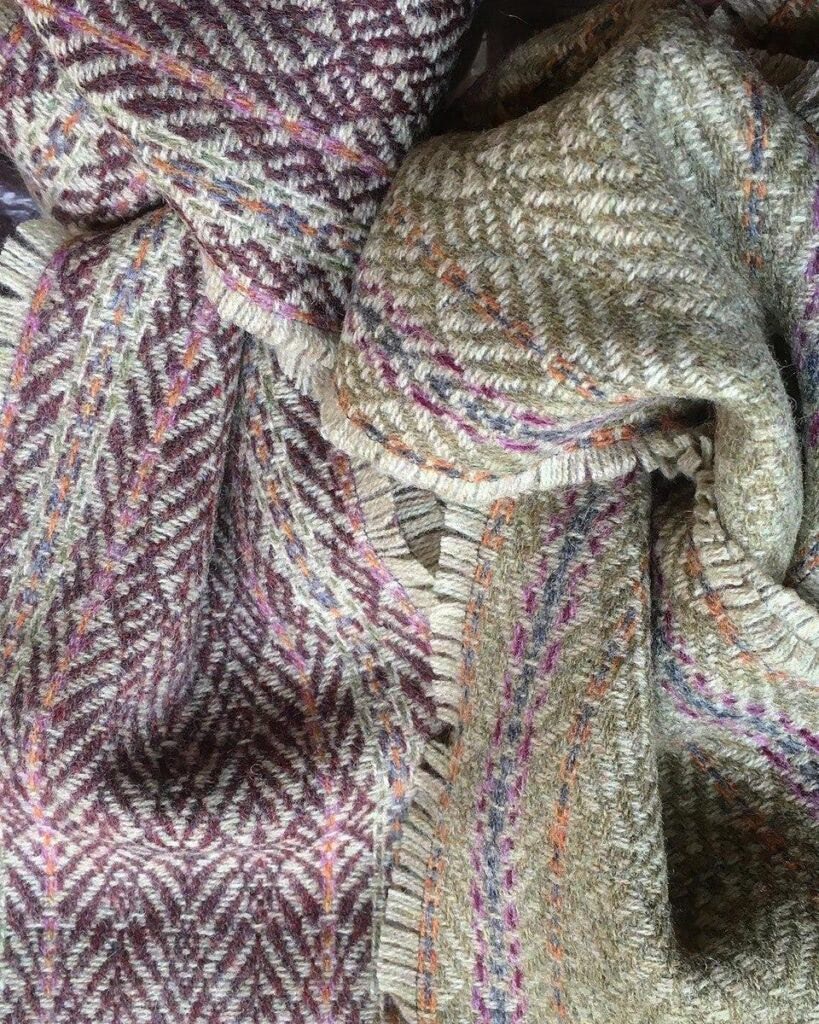
Sarah Tyssen designs woven textiles on her handloom for production of limited edition scarves and blankets on a mechanised loom. Sarah worked as a designer for Morgan and Oates in Herefordshire which gave her an invaluable insight into all aspects of working in a design studio and the processes involved in commission weaving.
After three years there, she started her own business. In 2007, her family moved to The Weaving House – built in 1896, during the Arts and Crafts Movement, as a weaving workshop for Haslemere Peasant Industries. Sarah was very excited to bring weaving back to the house.
Sarah exhibits at shows and sells through selected stockists around the country.
What marketing do you do for craft selling events?
“For pre-show marketing, I promote my presence at events on my website and via Instagram, with increasing regularity in the lead up.
I always post out ALL of the Private View tickets and discount vouchers to my mailing list with a personalised handwritten card, and hand out the rest of the flyers and vouchers at other events I may be showing at.
I sometimes do a free ticket giveaway on Instagram, and do a MailChimp mail out too.
I can’t stress enough the importance of every exhibitor doing their bit to publicise the event.”
How do you display your work?
“My stand set up is versatile and varies slightly according to the size and shape of the space. I customised Ikea trestle table legs to make my base units, which, with different table top attachments, work really well … and they dismantle easily to fit in the car.
I have developed a simple, consistent style of display that I think shows my work well. If there are walls I hang poles to utilise as much of the space as possible. Storage for extra stock, carrier bags, paperwork etc is incorporated on the stand, and I hide away my personal belongings as tidily as possible.
I move work around regularly as I have noticed that the position of an item at eye level or in a different light can help it be noticed!
I have a high folding stool that doubles as a work surface to wrap and take payments. I position this at the outside edge, to keep the stand as clear as possible whilst sales are going on. I can perch on the stool, but am still almost at eye-level to speak to customers, and I can get up easily for a more involved conversation, without looking like I have to ‘make an effort’ to get up …which could put pressure on the customer.
I always greet customers and invite them to handle the work and try things on, and then I leave them alone to look at my work without interruption.
It is important to watch their body language and judge whether additional help or information is required.
I price everything clearly, and usually have a short bio for people to read so they can understand how I work.
I have plenty of business cards as they are a brilliant visual reminder of my work and I always follow up any leads in the week following the show.”
Emma Lacey – Ceramicist
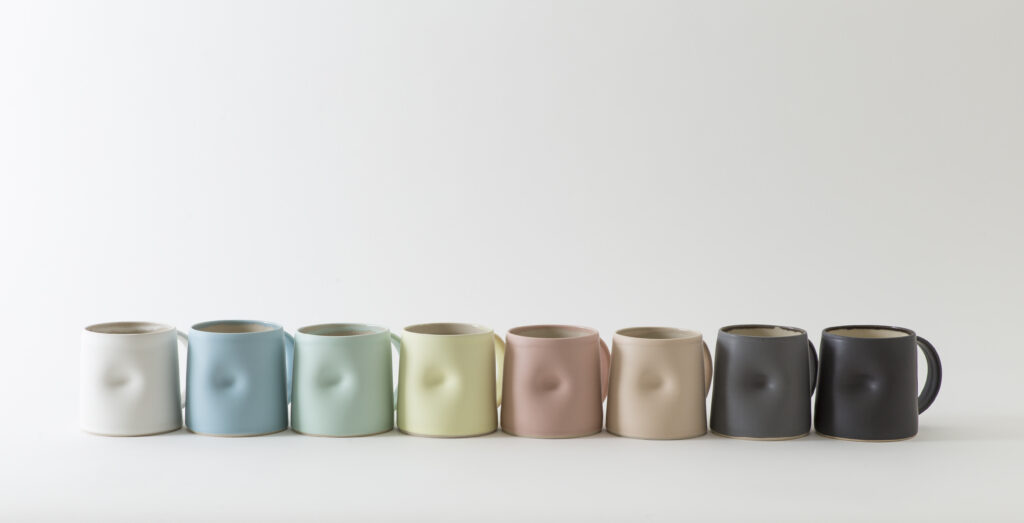
Emma Lacey is a ceramics designer and maker, best known for her hand-thrown Everyday Tableware range. Her work is concerned primarily with tactility and functionality and she uses her making skills and design knowledge to develop work which is a pleasure to hold and behold!
Emma likes to design through making, working with clay to exploit its tactile and aesthetic qualities. She designs for retail and dining markets and works mainly on the wheel whilst also designing for industrial production. Her work sits comfortably between craft and design contexts and is stocked both in independent craft galleries and large design and interiors stores such as The Conran Shop and Liberty.
How do you decide which shows to do?
“I would firstly encourage a lot of research. Make sure your work will sit comfortably and appropriately at an event whilst standing out in some way too. Do this by visiting trade shows, speaking to other designers and makers about their experience and their favourite shows.
If you want to sell more into the retail environment then you might go for larger trade shows.
If you are more interested in selling direct to your customer or collector and working with independent galleries then your best bet is the more specialist craft shows and fairs where you can sell off the stand to a more focused audience and speak to your end customer.”
How do you promote yourself?
“In terms of marketing pre-show, it’s really nice to tell a story and build a bit of anticipation through social media. This can be informal and inexpensive and can help you to reach a wide audience. You will need good images for this and clarity in your presentation.
I have found that making special pieces for shows is a great way to inject a bit of new interest – both for potential clients but also for me in the studio.
You can send out press releases if you have a press-contact list and make sure you provide great images and a bit of concise text to the show organisers in a timely and organised fashion so that they might promote your work too.”
How do you present your work & yourself?
“Think about how you will arrange your work at the show.
Are the pieces accessible if you want people to be able to pick them up or are they safe if you don’t? Are they well lit and curated?
It is tempting to have examples of everything you make just in case that person who wants the ‘slate grey small sugar bowl’ turns up at the show, however it sometimes makes sense to be selective in order to give your exhibition a cohesiveness, which can help it to stand out. You can always send people catalogues or show them images of pieces they can purchase after the show (make sure you get their contacts and make sure you follow up promptly if you have promised to send information).
Speaking to visitors and potential clients is of course a professional activity which requires politeness and knowledge but above all, we are all human and it’s just nice if people are friendly and not pushy.
Know your prices (or at least have them to hand).
Know your work, know your lead times.
It is good to say yes to exciting opportunities but make sure you know what your bottom line is for pricing and timing.
Most trade shows from September onward are a bit late for Christmas orders and people will understand if your lead times are long. However, direct selling events before Christmas are a great opportunity to access the gift market. I don’t do craft markets myself but have friends who do extraordinarily well at these in the lead up to Christmas.
Make sure you have a good amount of stock for these and if they are less formal events (markets or open studios) then take along your samples and seconds. Most people love a bargain and you can make space in the studio and your mind for new work in the New Year!”
Natasha Goodfellow – Curator ‘Beautiful & Useful’
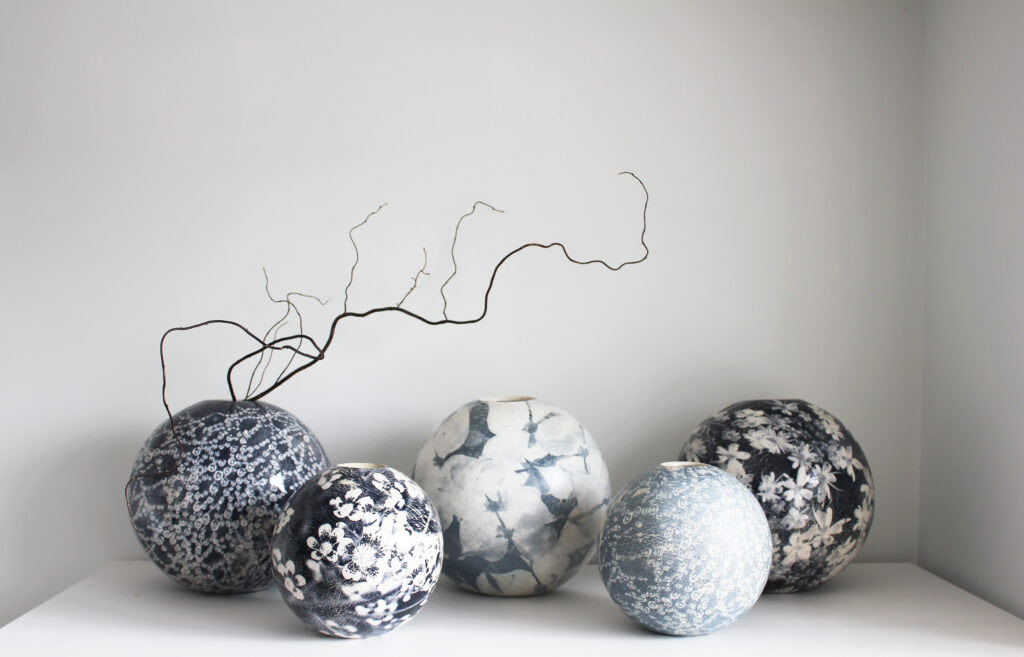
Natasha Goodfellow is a writer, editor and curator of Beautiful & Useful, craft fairs held every year at various locations across the UK. She was previously manager of GROW London, the contemporary garden fair, which became part of the House & Garden Festival.
What marketing advice do you have for creatives?
“Social media is obviously a huge help for pre-show marketing. Posting on Instagram, Facebook, X and TikTok etc helps to get the word out to your customers – existing and potential – of where you’ll be and what you’re up to. Use hashtags to reach new people interested in what you do.
The other advice I’d add is to use the publicity materials provided. If a show you’ll be exhibiting at sends you fliers or invites to the Private View, make sure you give them out. And, although it won’t always be possible to supply more if you run out – it’s worth asking.
A good-looking stand and a range of different priced items are key, as is a big smile.2
People who engage with customers do better than those who don’t. It doesn’t need to be a hard sell – just a bit of chat about how they are, what brought them here, or even a (genuine) compliment about something they’re wearing can all help get the ball rolling.
Always have a pile of business cards on your stand for visitors to take, and encourage them to give you their email addresses too. Have an iPad to hand with your website sign up form and maybe offer a give-away as incentive.
In my experience, people come looking for presents and are ready to buy – for their friends and family and often for themselves.
Having a range of items at different prices is a good idea as smaller items priced as stocking-fillers may well attract interest and lead to sales of higher-priced items too.”
Claire Montgomery – The Fairy Tale Fair
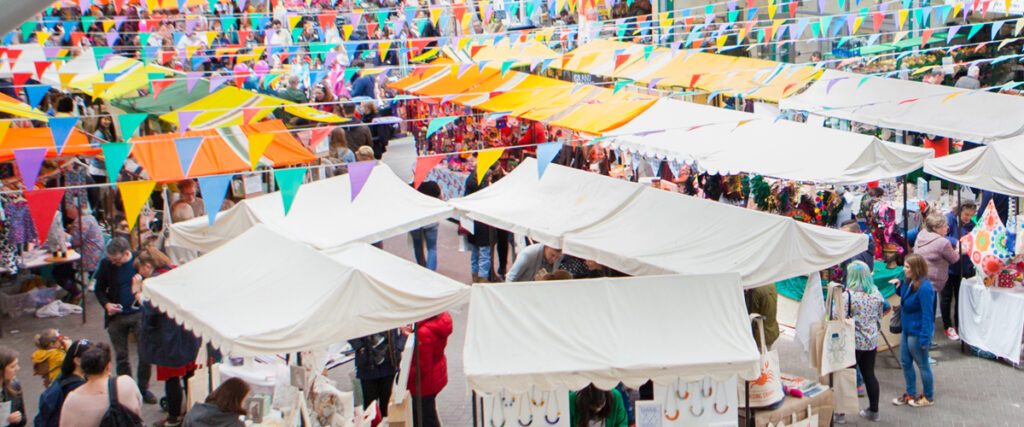
The Fairy Tale Fair host handmade, craft, vintage and wedding Fairs in Brighton and Sussex. All sellers are independent and local, the real people behind the brands. There fairs also offer craft workshops and sometimes even have wonderful live singers.
What’s your display advice for new exhibitors?
“We look for stall holders who have beautiful displays to encourage visitors of the fair over to their stall.
We find that stalls with lots of height work well – it could be peg boards, stacked crates with products in or custom DIY display boards.
At Christmas a few fairy lights can really enhance a stall, especially when the natural light dims in the afternoon, the lights really twinkle and draw the eye – they can be simple battery powered ones that you don’t need to worry about plugging in.
Having a strong brand with your company name on the front of your stall, business cards and your colour scheme throughout can help the stand work together, look professional and help your customers identify you. We suggest that props can help enhance displays but be sure to only use props for a purpose and keep in mind that you don’t want them to overshadow or draw attention away from your products – keep these as the main focus of the stall.”
What’s your top tip for marketing?
“It’s great to get lots of photos of your display so you can share these on social media on the day and your followers who visit will know exactly what to look for to find you.
You might even want to do a short video or live stream of your stall and walk about the venue to encourage local followers along.
Be sure to also share any promos the event sends you before the day so that your followers and fan base know you’ll be there.”
The event can do all it can to get people through the doors, but only YOU can bring your followers there to meet you in person.
Rachael Booth-Clibborn – Founder, Muswell Hill Creatives
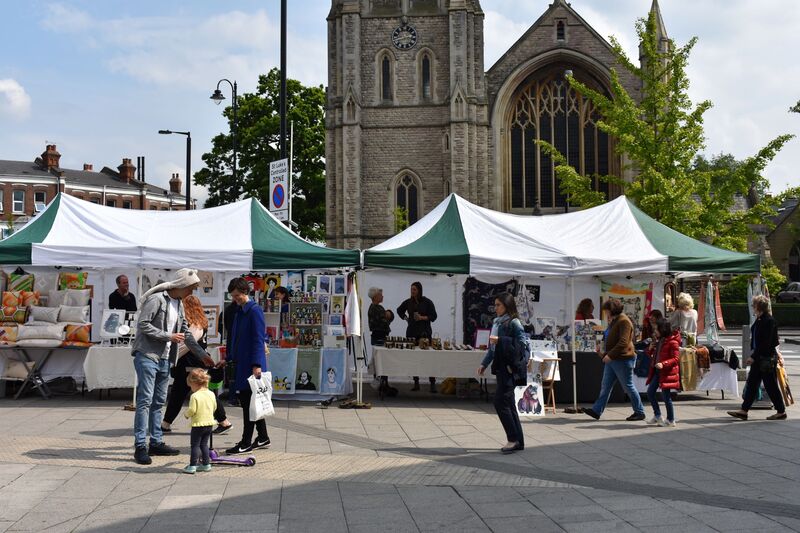
Muswell Hill Creatives is a dynamic collective of artists, designers, and makers in North London. It runs four outdoor markets a year in the heart of Muswell Hill. Each market is curated to ensure high standards of design and craftsmanship, a core aspect of the collective’s ethos.
What marketing advice do you have?
“For pre-show marketing, list all the Christmas markets you are doing on your website/online shops and include live web and social media links.
Provide the organiser with eye-catching and good quality photography for their promotional use. Don’t just rely on the organiser to promote your presence at the market.
Dedicate time for your own social media promotion and send an email newsletter to your customers with all of your upcoming holiday events. Include images of what they can buy on the day and always include links, locations and times.
Post images of your stall on social media on the day and use Facebook / Instagram Live to give them a tour of the event. Use the event and local hashtags.”
What are your display tips?
“Use props so that your work is not all displayed flat on the table.
Have a trial run before the event, stand back, look at what would draw people in to your stall.
Have visible branding in a practical format to see you through the market season. You want people to easily spot you and remember you from one market to the next.
Use festive decorations for your stall that reflect your brand/product, as well as the holiday.
Good lighting is essential for outdoor markets. Think fairy lights, but also practical (battery powered) flood lights.
Put your business card in with any purchase. Write down costs of products on a promotional post card.
Ask your customer for their email address for future newsletters and follow-up purchases.
Be sure to have a card reader system in place to take payments. SumUp, iZettle and PayPal all have excellent and inexpensive options. Ask a friend for a referral code if you are just starting with this.
Most importantly of all, YOU are your product. Stand up, SMILE and engage people in conversation about your work. Make them remember you.“

Did you find these tips on how to make the most of craft selling events useful? We’d love to hear from you in the comments. What pre-show marketing do you do? What really works for you? What props do you use on your stand at (Christmas) fairs to make you stand out?
There are some great tips here. Sarah is exhibiting with us at our West Horsley event and her advice to other makers is fabulous. As an organiser you wouldn’t believe how many exhibitors think they don’t need to do anything to promote their presence at the show – they think we should do it all. Of course, we advertise our events widely but it’s like a shopping centre promoting their centre – the shops within it still need to tell people they are in the centre!
Thanks so much for your comments there Sally. We couldn’t agree more!
These are all brilliant tips. I have also just watched the video. The consistent message is get the event out there and keep in touch with your visitors. We are doing 2 x 2 day events this year after a long break, in York then in Scarborough so am looking forward to promoting and using the tips I have learnt today. Thank you all.
Good luck with your shows Allison!
This is a really helpful little article, thanks!
Also the Vimeo film about cross promotion with fairs and events.